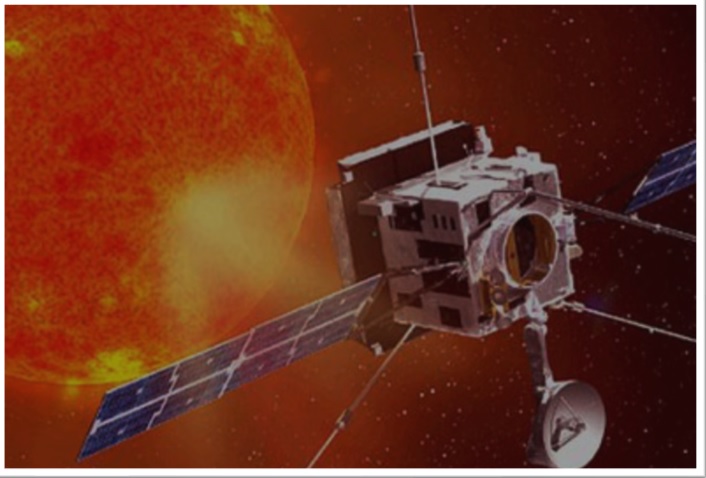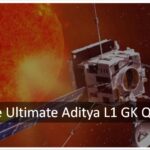After the historic success of Chandrayaan 3, India is going to take another huge step in the field of Space Exploration. the Aditya-L1 spacecraft. Designed to study the dynamic nature of the Sun, Aditya-L1 will begin its journey to unveil the secret of our closest star.
With its state-of-the-art instruments and the latest technology, Aditya L1 will study various concepts of the sun including its heat mechanism. According to the Director of Space Applications Centre-Isro, Ahmedabad, ISRO will launch Aditya L1 using its PSLV-XL rocket from Satish Dhawan Space Centre SHAR (SDSC SHAR), Sriharikota.
India witnessed a festive atmosphere and a spike in the public’s interest in space exploration after Chandrayaan 3. Expectations from Aditya L1 are the same with everyone having their fingers crossed hoping for its success.
Aditya L1 Launch Date
| Name of the Spacecraft | Aditya L1 |
| Type of the mission | Solar Observation |
| Operator | ISRO |
| Launch Date | 2nd September 2023 |
| Launch site | Satish Dhawan Space Centre SHAR (SDSC SHAR),Sriharikota. |
| Planned Mission Duration | 5.2 Years |
History of Aditya Mission
The idea of “Aditya” was conceptualised for the first time in January 2008. Earlier, it was intended to be a small satellite with a weight of around 400 kgs only. Its purpose was to orbit the Earth at a height of 800 km and study the solar corona using a coronagraph.
In 2016-17, the budget of the project was increased and the scope of the mission was also expanded. Then, it was decided that “Aditya” would become a comprehensive observatory for studying the sun and space environment.
With all these changes in the mission, its name was also changed to “Aditya L1”.
Top 10 space agencies in the World
Objectives of Aditya L1
As per ISRO, the main objectives of Aditya L-1 are as follows.
- Studying the Solar upper atmospheric (chromosphere and corona) dynamics.
- Studying the chromospheric and coronal heating, physics of the partially ionized plasma, initiation of the coronal mass ejections, and flares.
- Diagnosing the coronal and coronal loops plasma: Temperature, velocity and density.
- Understanding the physics of solar corona and its heating mechanism.
- Observing the in-situ particle and plasma environment to get data for the study of particle dynamics from the Sun.
- Drivers for space weather (origin, composition, and dynamics of solar wind)
- Identifying the sequence of processes that occur at multiple layers (chromosphere, base, and extended corona) which eventually leads to solar eruptive events.
- Development, dynamics, and origin of CMEs.
About The Mission
Here are some facts about the Aditya L-1 Mission that you should Know.
- This mission will take approximately 109 earth days to reach its destination i.e. halo orbit around the L1 point.
- The distance of the L1 point is about 1.5 million kilometres from Earth.
- Aditya L1 will also carry 7 science payloads weighing 1,500 kg (3,300 lb).
- All of these payloads have different objectives.
- 4 Payloads will have a direct view of the sun from the L1 point. The rest of the payloads will conduct in-situ studies of various particles and fields around the L1 point.
- After the launch, Aditya L-1 will complete its orbit around the earth and then enter the cruise phase to begin its journey towards point L1. Check out the following image to understand the trajectory of the mission.

Speciality of Lagrange Point 1 (L1)
There is a valid reason why ISRO has chosen Lagrange Point 1 for launching its Aditya probe. This point provides an uninterrupted view of the Sun. As per scientists, this point also offers the best observatory angels to monitor solar activities. The Solar and Heliospheric Observatory Satellite from NASA called “SOHO” is already placed near this point.
Payloads on Aditya L-1

| Remote Sensing Payloads | In-Situ Payloads |
| Visible Emission Line Coronagraph (VELC) | Aditya Solar wind Particle Experiment (ASPEX) |
| Solar Ultraviolet Imaging Telescope (SUIT) | Plasma Analyser Package For Aditya (PAPA) |
| Solar Low Energy X-ray Spectrometer (SoLEXS) | Advanced Tri-axial High-Resolution Digital Magnetometers |
| High Energy L1 Orbiting X-ray Spectrometer (HEL1OS) |
Gayatri Malhotra Will Control the Aditya L1 Space Craft
Aditya L1 is also going to be special for Prayagraj, UP. It is so because Gayatri Malhotra, who is from Prayagraj is the project manager of Aditya L1’s control system group.
She will control the spacecraft till it reaches its destination i.e. L1 Point near the sun. Gayatri also played a pivotal role in manufacturing the hardware that will be used in the mission. She hails from Balrampur house, Prayagraj, and studied at Allahabad University.
Check GK questions on Aditya L1
In 1996, Gayatri Malhotra was awarded six gold medals for getting 1st rank in B.Sc, Physics department, and Mathematics department. She then went on to complete B.Tech and M.Tech with gold medals. She completed her M.Tech in 2002.
Ravi Kesarvani – Another scientist for UP, Ravi Kesarvani is also associated with Aditya L1 mission. Ravi is from Pratapgarh’s Kunda and he is going to study ultraviolet rays emitting from the sun. He has already worked on the Solar Ultraviolet Imaging Telescope associated with Aditya L1.

Necessity to study the Sun from space
It is extremely important for mankind to study the sun from space. The sun emits radiation in nearly all directions along with numerous other energetic particles.
The problem with studying these radiations from Earth is that our Earth’s atmosphere works as a protective shield. It filters out most of these radiations including magnetic fields and particles.
As most of these radiations don’t reach Earth it is not possible to study them. However, we can study them from space.
Frequently Asked Questions
Polar Satellite Launch Vehicle (PSLV) XL
No, it will not carry any astronaut.
No, although point L1 is about 1.5 million kilometres away from the Earth, it is still only 1/100 of the distance between the earth and the sun.
No, it will only reach up to Lagrange Point 1 (L1) which is millions of kilometres away from the sun.
2nd September, 2023
Image Source – ISRO











